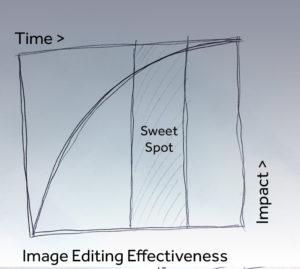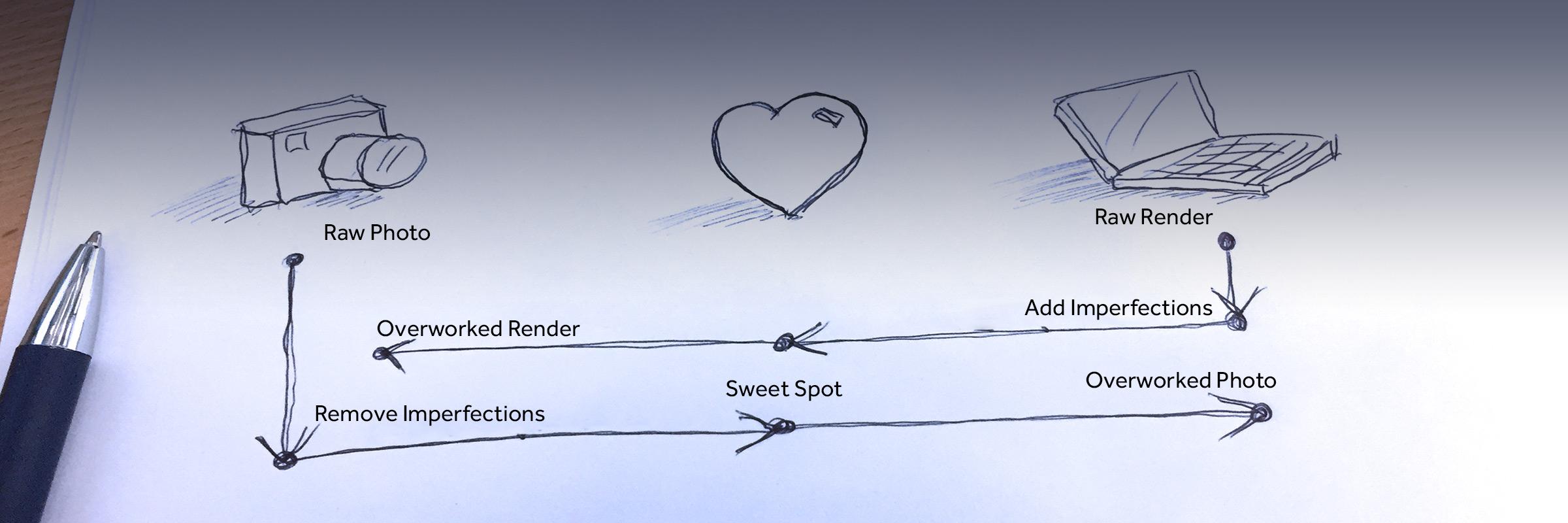The Sweet Spot of Image Manipulation
By:
Joel Eckert
on 1/11/2017
Sometimes when you work with images, it can be hard to know when to put something down and move on. Whether the source is from a CG application like 3D Studio Max, or from a DSLR camera, there is always a threshold where further editing becomes ineffective.
When do you stop?!
I personally struggle with this. It is a constant battle to know when you are at an appropriate stopping point. There is a sweet spot but unfortunately there are no real rules to find it. Feeling completely impartial to your own changes is one sign. If you say to yourself, “Eh…Looks fine either way” …this is an indicator that you need to either move on or get a second opinion. If they say, “what’s the difference?” …then you’ve definitely gone too far. There is a more valid point to this beyond just aesthetics.
Time and budget will basically be wasted without impactful change after a certain point.

You may notice when you pass the sweet spot because updates will actually begin to look extremely minuscule, or possibly even worse than in previous versions. Thinking on this, I noticed there was an interesting irony about working with images from a camera and from CG sources.
The Sweet Spot Irony of CG and Photography
The image below demonstrates an interesting irony about image manipulation, depending on sources. The goals are usually inverted between the workflow of Raw CG images and Raw camera images.

- With CG you have to work to make things look more real by adding imperfections. If you continue to overwork the image, usually it will have no effective impact on the final result. You can overwork a CG image to make it look hyper-real, which is usually completely unnecessary and will make the project go over-budget, especially in advertising where money is more limited than in film. When you over-manipulate CG images for too long you start adding details nobody will ever see and you waste your own time and a projects budget. With infinite parameters and possibilities, this is a very easy rabbit hole to find yourself in.
- With Photography you have to clean up and enhance everything to remove imperfections. Essentially starting from the other end of the spectrum. When you over-manipulate a photograph, it will begin to look fake and image quality will decrease.
- Somewhere in the middle of both is your sweet spot or stopping point.
Think of the impact of each iteration of changes…
…and you will likely notice that the impact decreases as you continue to work through a job. Of course there are style exceptions to this, but as a general rule, this is true.
There is a saying among CG folk: ”anyone can get a project to 95%, but it takes a special type of person to get to you that last 5%.” I think this is because of this exponential curve which is almost always effected by budgets and patience. Controversially, I think 95-98% is usually the right time to call something complete because you can easily spend exactly the same amount of time on the last 5% as you did on the first 95%. The time spent in minutia is almost always a poor use of client or company money. I suggest getting familiar with your own timing and learn when to move on.
Da Vinci is quoted as saying, “Art is never finished, it is abandoned.” Maybe he was in tune with the sweet spot of when to move on, and that’s why he was so prolific?! Hmm.
Related Posts
Reel Stories: A Photography Project Exploring Inclusivity in Fishing
By: Zoe Cope on 7/14/2023
Find out how we captured diverse fishing experiences across Florida and Kentucky with a mighty team of five.
Read More »How to Make Your New Photos Look Vintage
By: Mitch Wiesen on 9/1/2020
I’ve always been drawn to the warm, friendly way film captures reality. I found my first analog camera, a Canon AE-1, sitting on a blanket at a flea market at age 14, and I was enamored.
Read More »
